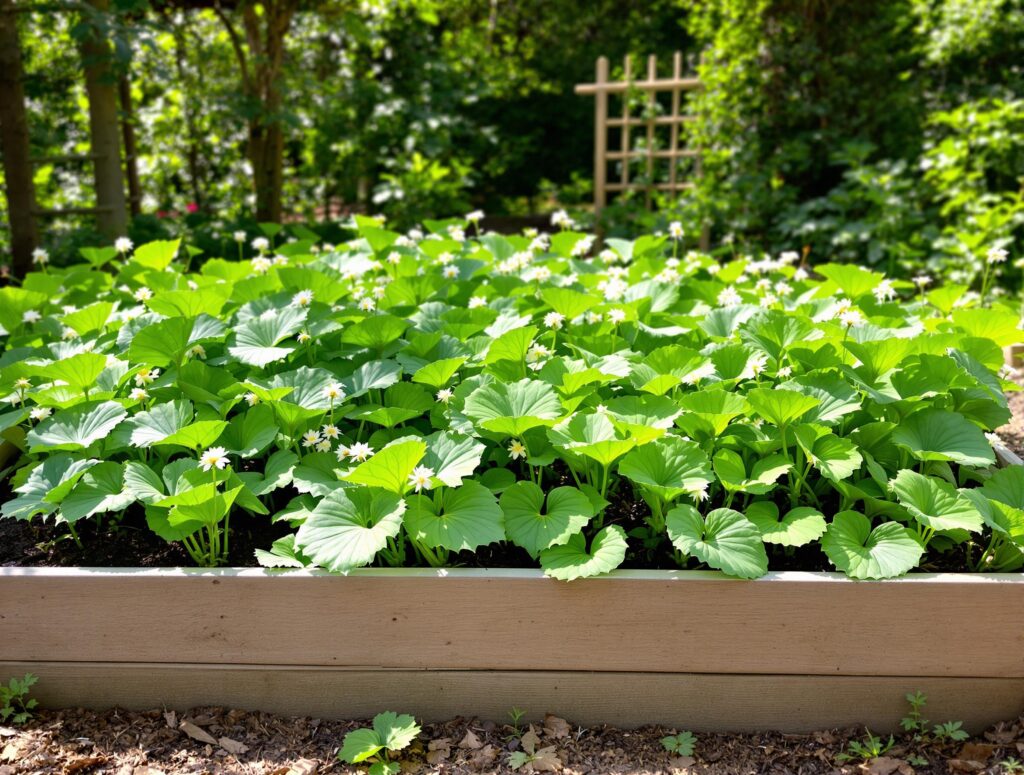
Introduction
Growing potatoes can be a rewarding experience, offering both culinary delight and a sense of accomplishment. Whether you’re a seasoned gardener or a novice, cultivating your own potatoes allows you to enjoy fresh, homegrown produce while understanding the process from planting to harvesting. This guide will walk you through everything you need to know to successfully grow potatoes in your garden.
Understanding Potatoes
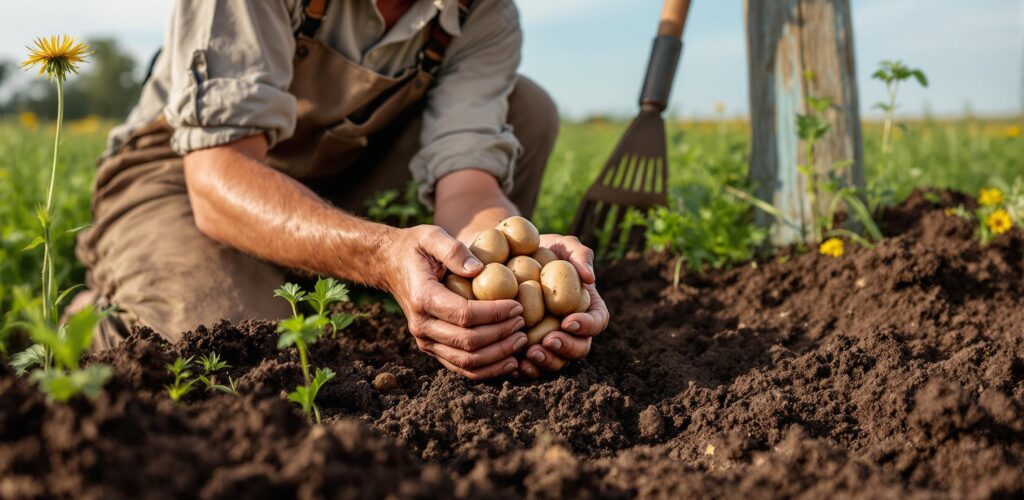
Potatoes, scientifically known as Solanum tuberosum, are cool-weather vegetables that thrive in various climates. Originating from the Andes, potatoes have been a staple food for centuries. They are part of the nightshade family, which includes tomatoes and peppers. The potato plant produces underground tubers, which are the edible part we consume. For a detailed history and botanical overview, you can refer to The Old Farmer’s Almanac guide on growing potatoes.
Types of Potatoes
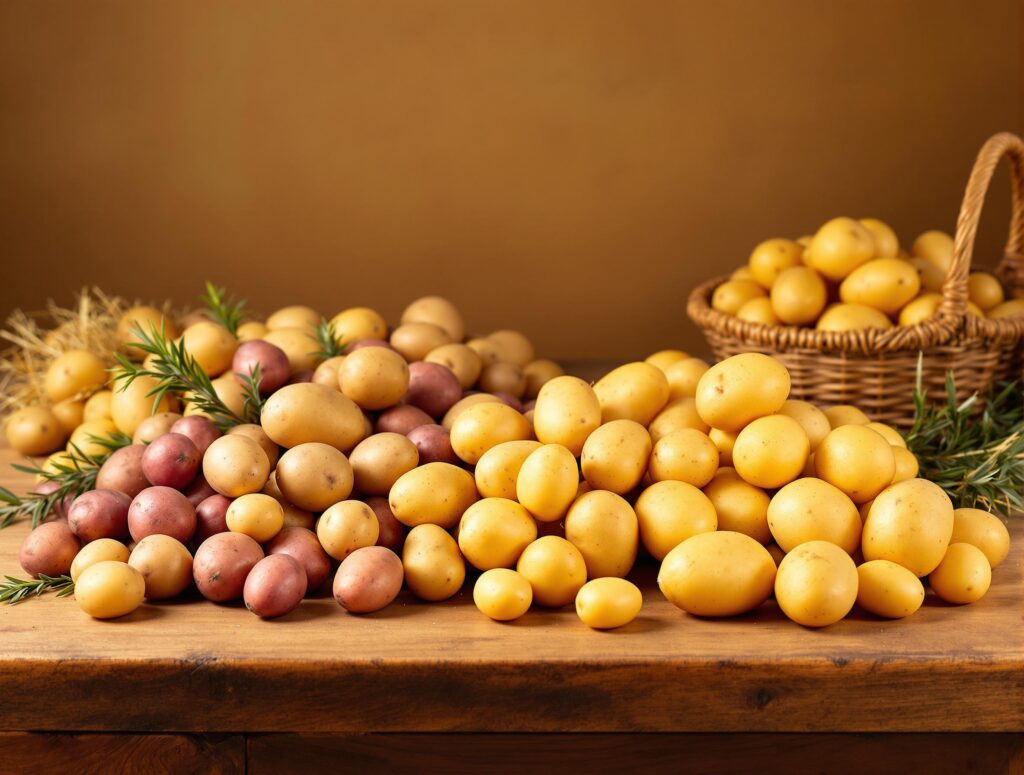
Potatoes come in numerous varieties, each with unique characteristics suitable for different culinary uses. They are generally categorized into three main types based on their maturity and harvest time:
- Early-season potatoes: These are planted first in early spring and mature quickly, usually within 60 to 80 days. They have tender flesh and thin skin, making them ideal for early summer harvesting.
- Mid-season potatoes: Also known as “earlies,” these potatoes mature in 80 to 100 days and are typically harvested in the second half of summer. They store slightly longer than early-season varieties.
- Late-season potatoes: These are best for storing and are harvested in the fall. They mature in 100 to 130 days and are suitable for baking, roasting, and mashing.
For more information on potato varieties and their uses, check out Garden Design’s guide on planting and harvesting potatoes.
Benefits of Growing Potatoes

Growing your own potatoes offers several benefits:
- Nutritional value: Potatoes are packed with essential nutrients like vitamin C, potassium, and fiber.
- Cost-effective: Homegrown potatoes can be more economical than store-bought ones, especially if you grow them organically.
- Environmentally friendly: Growing your own food reduces your carbon footprint by minimizing the need for transportation and packaging.
- Control over quality: You can ensure that your potatoes are free from pesticides and other chemicals by growing them yourself.
Choosing the Right Seed Potatoes
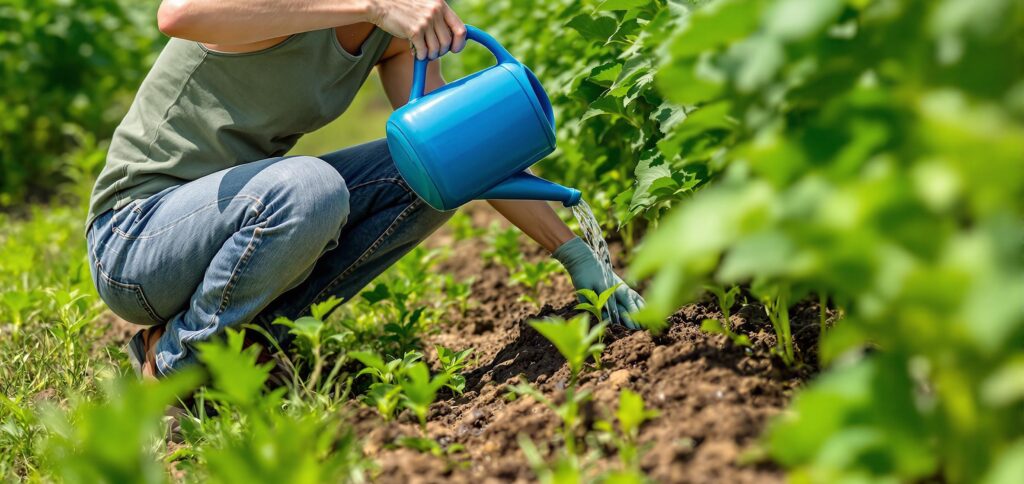
Selecting the right seed potatoes is crucial for a successful harvest. Here are some tips:
- Choose certified disease-free seed potatoes to avoid common potato diseases.
- Look for varieties that are well-suited to your climate and soil conditions.
- Consider the potato’s maturity time and your preferred culinary use.
Planting Potatoes
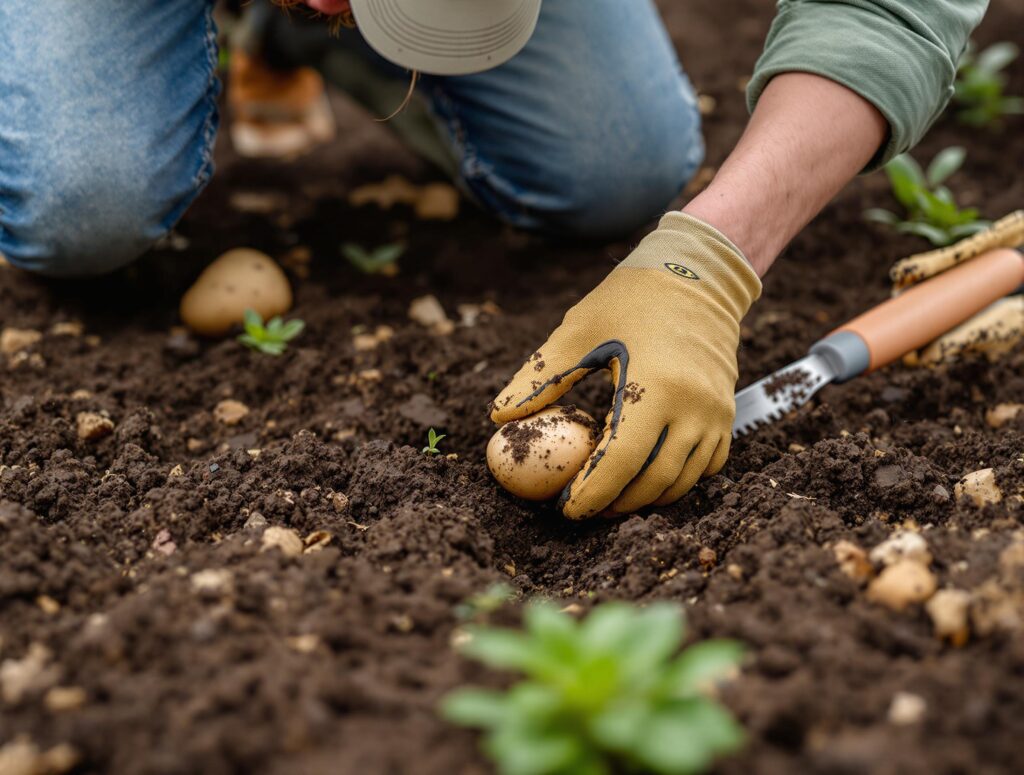
Planting potatoes involves several key steps:
- Soil preparation: Potatoes thrive in loose, well-draining soil with a pH between 5.8 and 6.5. Ensure your soil is fertile and free from rocks and debris.
- Planting techniques: You can plant potatoes in trenches, hills, or containers. Each method has its advantages, so choose the one that best fits your gardening style and space.
- Timing: Plant potatoes 2 to 4 weeks before the last frost date in your area. Ensure the soil temperature is at least 45°F (7°C).
Growing Potatoes in Containers
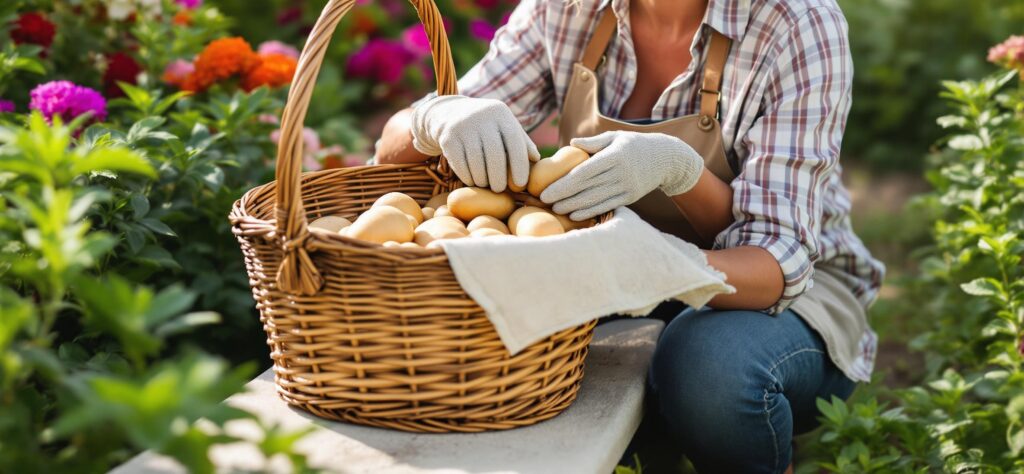
Container gardening is an excellent option for those with limited space. Here’s how to grow potatoes in containers:
- Choose a large container with good drainage.
- Fill the container with a well-draining potting mix.
- Plant seed potatoes at the appropriate depth and water thoroughly.
- Ensure consistent watering, as containers can dry out quickly.
Caring for Potato Plants
Proper care is essential for a bountiful potato harvest:
- Watering: Potatoes require consistent moisture, especially during tuber formation. Aim for 1 to 2 inches of water per week.
- Hilling: Hilling involves mounding soil around the base of the plant to encourage tuber growth and prevent sun exposure, which can turn potatoes green and toxic.
- Fertilizing: Use a low-nitrogen, high-phosphorus fertilizer to promote tuber growth.
Harvesting Potatoes
Harvesting potatoes is a rewarding process. Here’s how to do it:
- Early harvest: You can harvest small, new potatoes a few weeks after planting by gently digging around the base of the plant.
- Main harvest: For mature potatoes, wait until the plant’s foliage dies back. Dig carefully to avoid damaging the tubers.
Storing Potatoes
Proper storage is crucial for extending the shelf life of your potatoes:
- Store potatoes in a cool, dark, and humid place, ideally between 38° to 40°F (3° to 4°C).
- Avoid exposing potatoes to light, as this can cause them to turn green and produce solanine, a toxic compound.
- Check stored potatoes regularly and remove any that show signs of spoilage.
Common Diseases and Pests
Potatoes can be susceptible to various diseases and pests:
- Diseases: Common potato diseases include blight and scab. To prevent these, practice crop rotation and use certified disease-free seed potatoes.
- Pests: Potato beetles, aphids, and wireworms are common pests. Regularly inspect your plants and use organic or chemical controls as needed.
Companion Planting with Potatoes
Companion planting can benefit your potato crop:
- Good companions: Plants like beans, peas, and cabbage can improve soil health and deter pests.
- Bad companions: Avoid planting potatoes near tomatoes, peppers, and eggplants, as they can compete for resources and attract similar pests.
Organic Potato Growing
Growing potatoes organically offers several benefits:
- Soil health: Organic methods improve soil fertility and structure over time.
- Environmental impact: Organic gardening reduces the use of harmful chemicals, promoting a healthier ecosystem.
- Taste and nutrition: Organically grown potatoes often have a richer flavor and higher nutritional content.
Growing Potatoes in Different Climates
Adapting your potato-growing techniques to different climates is essential:
- Cool climates: In cooler regions, plant potatoes early in the spring and choose early-maturing varieties.
- Warm climates: In warmer regions, plant potatoes in the fall or winter and choose heat-tolerant varieties.
FAQs
- Q: Can I grow potatoes from store-bought potatoes?
- A: It’s not recommended, as store-bought potatoes may have been treated with sprout inhibitors and can introduce diseases to your garden.
- Q: How often should I water my potato plants?
- A: Potatoes require consistent moisture. Aim for 1 to 2 inches of water per week, adjusting for rainfall.
- Q: What is hilling, and why is it important?
- A: Hilling involves mounding soil around the base of the potato plant to encourage tuber growth and prevent sun exposure, which can turn potatoes green and toxic.
Conclusion
Growing potatoes is a fulfilling endeavor that offers numerous benefits, from fresh, homegrown produce to a deeper understanding of the gardening process. By following this comprehensive guide, you’ll be well-equipped to cultivate a successful potato crop and enjoy the fruits of your labor. Happy gardening!